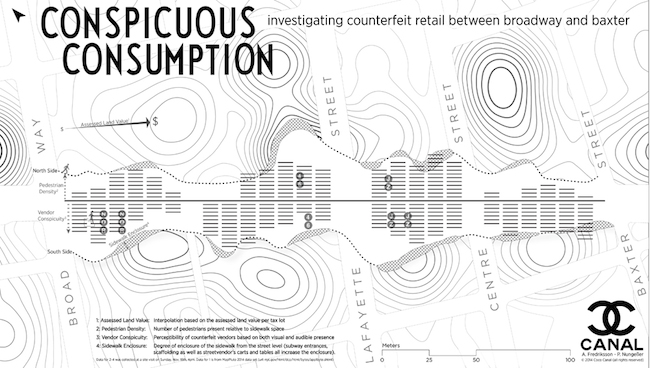Conspicuous Consumption
Anton Fredriksson, Paul Nungeßer

On Canal Street, between Broadway and Baxter, blocks away from Louis Vuitton's SoHo flagship store, the same handbags can be had for a fraction of the retail price. While the products sold are indistinguishable to the non-expert eye, the retail experience of these counterfeit goods is markedly different from the exclusivity that luxury brand stores communicate. "Watches, handbags, Gucci, Rolex..." one hears repeatedly walking along this section of Canal Street, intended to direct bargain-hunters to sheltered areas while clusters of deal-seeking tourists huddle around laminated brochures, displaying a panoply of counterfeit goods.
Our investigation aims to uncover the spatial logic that governs the retail transactions along this stretch of Canal Street. Looking at four different factors – assessed land value, pedestrian density, vendor conspicuity and sidewalk enclosure – we were interested to reveal the figure-ground relationship of these processes and their built environment. Be it in the form of scaffolding or subway entrances, the streetscape serves an instrumental role in providing or preventing a hospitable environment for counterfeit exchange.
While our static map intends to provide bird's eye view projecting larger trends, we restricted the viewer in our interactive map to a narrow zoom level where panning is the only form of interactivity, mirroring the unpredictability and the lack of oversight during of the actual shopping experience. An additional feature of the interactive map is the inclusion of a curated audio track documenting the sounds of the street interrupted by the occasional approach of a vendor that further disempowers the viewer.